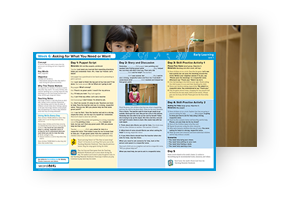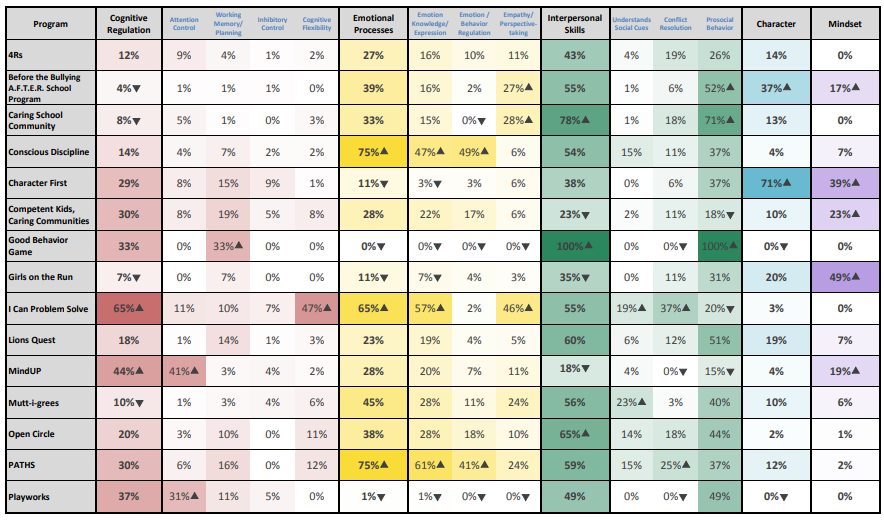The Top 25 Social Emotional Learning Programs Principals Should Consider
Developing self-awareness, interpersonal skills, and self-control that increase success in school, life, and work is achieved through Social-Emotional Learning. Students who are better at coping with daily challenges, classroom conflicts, and academic success are said to possess strong social-emotional skills. Schools are working to create a culture that promotes positive conversations, a connected ability to work with others, and an openness to diverse prospectives.
Self-Esteem
Change can be difficult for students whether they are transitioning from elementary to middle school or the physical, social, and emotional changes that they experience as adolescence. Adolescence is a time when mental health concerns and emotional disorders often begin to emerge. SEL provides a foundation for problem-solving, achieving self-discipline, controlling impulses, and managing one's emotions. I enjoy it when schools work together in a collaborative effort to proactively identify students who need extra interventions and then provide services to help kids navigate their challenges. As a teacher, I used “Second Step.” It was a program that pushed students on their cognitive regulation, emotional process, and interpersonal skills. Each card had a story and students were able to share practical solutions to solving problems. If you are looking to adopt a SEL program, I would take a look at this document that provides a wonderful overview of the targeted skills necessary for a successful year.
Top 25 Leading SEL Programs
Self-Awareness
Recognize one’s emotions, thoughts, and values and their influence on behavior. It creates a strong sense of confidence and an optimistic growth mindset to assess one's strengths and limitations more accurately.
Self-Management
When in different situations, SEL allows one to regulate emotions, thoughts, behavior, control impulses, and manage stress. One can work toward setting more positive goals in one's personal life, the workplace, and in academic achievement.
Social Awareness
SEL gives one the ability to look at situations from another’s point of view and empathize with their position. Be understanding of those from diverse cultures and ethnic backgrounds, resulting in respect for others' ethical norms and behaviors.
Relationship Skills
SEL gives one the ability to maintain healthy and rewarding relationships with others with diverse backgrounds. Affords clear communication, to listen well to others in an atmosphere of cooperation, and to negotiate conflict with positive results. Be able to offer or seek assistance when the need arises.
Some Stats when using effective SEL Programs
· Aggression: 42% less physical aggression from students receiving SEL.
· Bullying: 20% less student bulling after receiving SEL.
· ROI: For every $1 invested in SEL returned $11.
· Dropout: 5-12% drop in the number of student dropouts after SEL.
· Achievement: 13% increase in academic achievement with SEL.
· Success: 79% of employers tout SEL as the most essential quality for successful employees.
Although these are some staggering statistics there is a need for using effective programming in school. the schools’ curriculum flourishes with structured lessons that are sequential provide clear explicit instructions for students who grapple with SEL. When the program, “Second Steps” was implemented we saw an increase in student conversation as well as conflict resolution. Parents have also come to school to share how their child is coping with social and emotional competences.
Sources
What is Social-Emotional Learning? Committee For Children. 2020
SEL Competencies. CASEL. 2019
Social and Emotional Learning. CASEL. 2019
Harvey, Linda. "The Latest Child-Indoctrination Scheme: SEL. CatholicCitizen.org.
https://www.wallacefoundation.org/knowledge-center/Documents/Navigating-Social-and-Emotional-Learning-from-the-Inside-Out.pdf
McGorry, P. D., Purcell, R., Goldstone, S., & Amminger, G. P. (2011). Age of onset and timing of treatment for mental and substance use disorders: Implications for preventive intervention strategies and models of care. Current Opinion in Psychiatry, 24, 301–306




